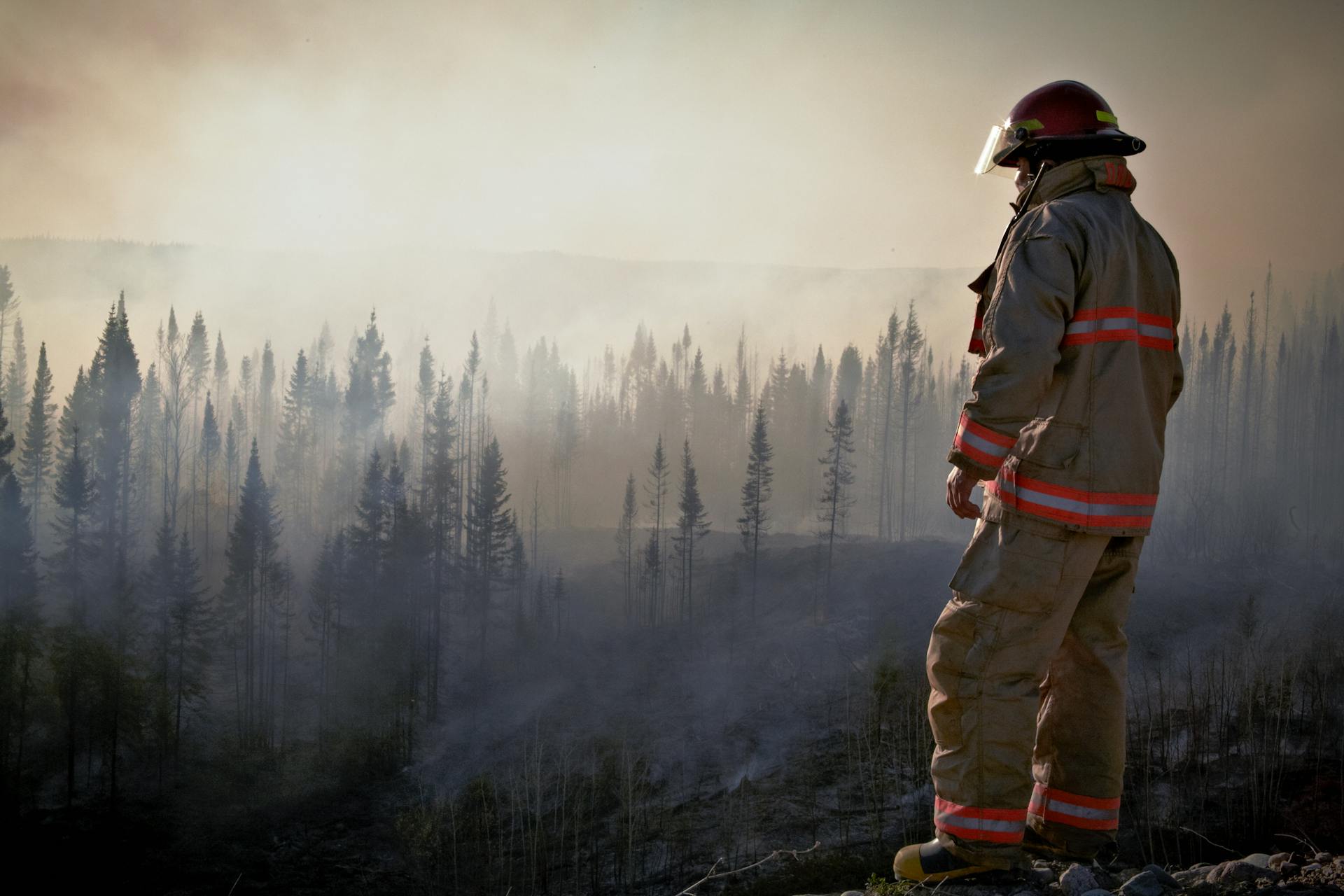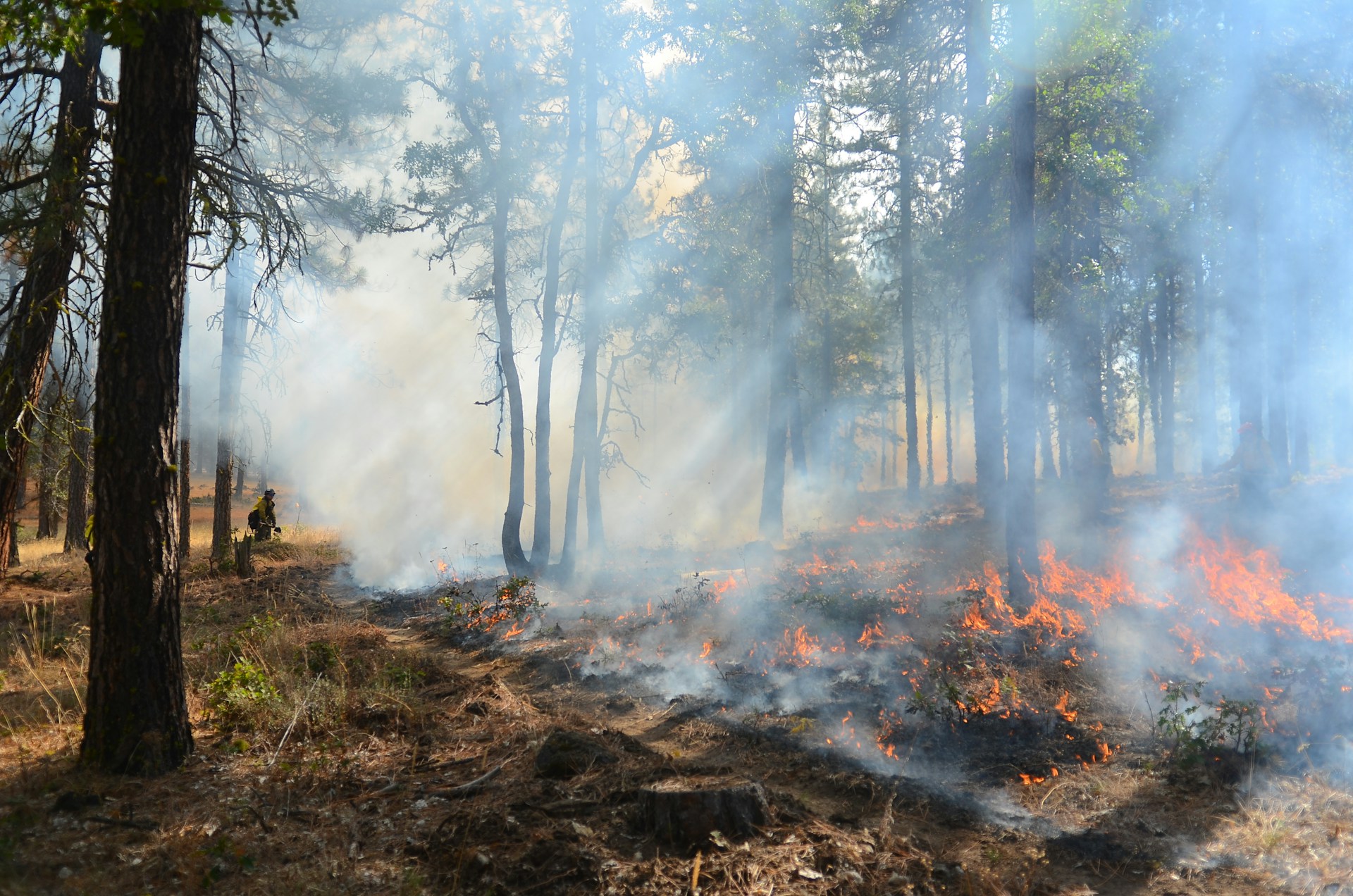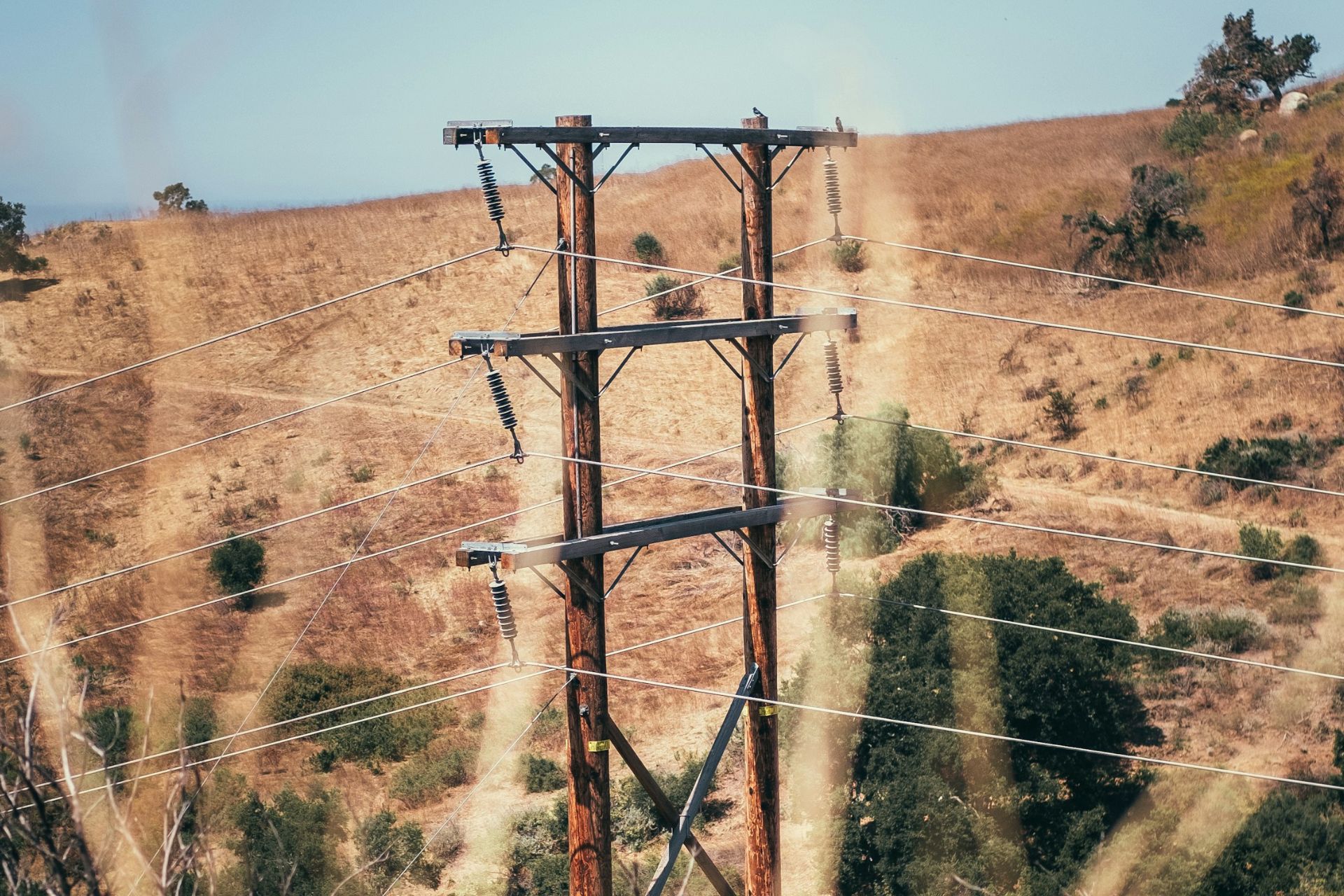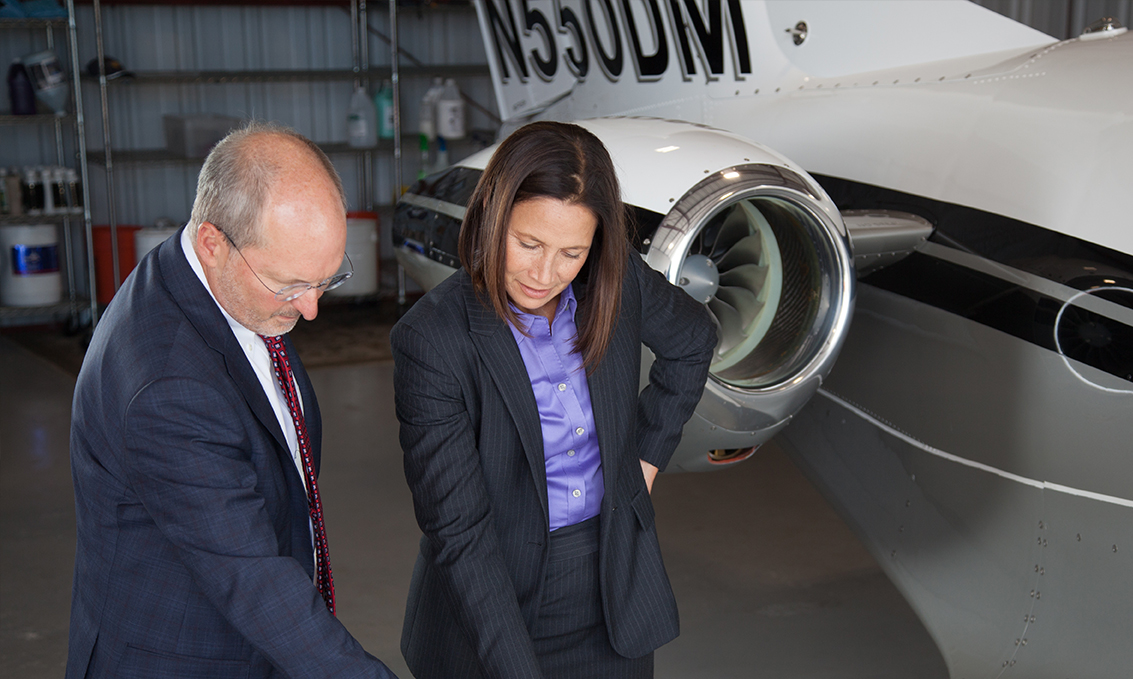
According to CAL FIRE, there were 8,110 wildfires in the Golden State in 2024. These wildfires burned over 1 million acres and destroyed more than 2,400 structures statewide. Since wildfires are part of the new normal in California, our lawyers wanted to look at their natural and human-made causes, and what wildfire survivors can do to seek compensation.
Danko Meredith is an established leader in complex wildfire lawsuits in California. Since 2009, we have worked on countless utility wildfire cases, including the Eaton Fire in Los Angeles from earlier this year. If you want to speak with our experienced California wildfire attorneys about what happened to you, contact our Bay Area law firm online or give us a call at (650) 453-3600. Consultations are free.
Natural Causes of Wildfires in California
Wildfires can be a natural part of many ecosystems as a means of eliminating invasive species, clearing away dead organic matter, and releasing nutrients into the soil. When wildfires occur naturally, they are usually the result of lightning strikes.
Wildfires Caused by Lightning
Lightning strikes are a leading cause of non-human wildfires. This is particularly true of lightning strikes that occur during dry thunderstorms. Dry thunderstorms are thunderstorms that cause a lot of thunder and lightning but little to no rain. These kinds of thunderstorms are common in deserts or areas where there’s minuscule moisture in the lower atmosphere.
Some notable examples of California wildfires caused by lightning strikes include:
- The August 2020 CA Lightning Fires: During August 2020, summer thunderstorms and lightning strikes ignited 650 different wildfires throughout Northern California. This included the August Complex fires, the SCU Lightning Complex fires, and the LNU Lightning Complex fires. Just those three lightning complex fires destroyed over 2,700 homes and businesses across 846,000 acres.
- The Rush Fire (2012): The Rush Fire was caused by lightning in Lassen County. It burned 315,577 acres across California and Nevada. Thankfully, the fire mostly affected rangelands and remote areas of both states, which limited its structural damage and direct impact on homeowners and businesses.
- The Marble Cone Fire (1977): The Marble Cone Fire was caused by two lightning strikes around the mountains of Big Sur. The blaze took three weeks to contain, burning 177,866 acres in the process.
Environmental Factors That Contribute to Wildfires
There are some notable environmental factors that can make wildfires in California more likely and more difficult to contain:
- Extended Drought Conditions: California has a pattern of extreme weather characterized by heavy rains in the fall and winter, followed by extended dry periods and heatwaves. When the greenery from the rainy months dries out, it creates ample amounts of fuel for a major wildfire.
- Strong Regional Winds: California has strong regional winds that make dry conditions worse and can spread embers during a fire. By now, many of us are familiar with the dangers that are exacerbated by the Santa Ana winds in Southern California and the Diablo winds in Northern California.
- Difficult or Remote Terrain: While aerial firefighting is common for many wildfires in the state, containing a wildfire requires the tireless work of good ground crews. Many wildfires start in or spread to mountains, remote land, and places that are difficult to access. Rough terrain makes it challenging for firefighters to fully contain a blaze, even smokejumpers.
Climate Change and the Risk of Future CA Wildfires
We also need to discuss the role of climate change in California’s wildfires. According to World Weather Attribution (WWA), climate change worsened the intensity and damage of the 2025 Los Angeles wildfires. WWA estimated that human-caused climate change made the short rainy season and the long dry season in Southern California 35% more likely.
Climate change is with us, and we have yet to surmise its long-term effects on the environment and the lives of Californians. As such, communities throughout Northern and Southern California are attempting to adapt to and plan for the new realities of the extended fire season in the decades ahead.

Human Causes of Wildfires in California
According to the National Park Service (NPS), humans cause 85% of all wildfires. Some of the most common reasons for human-caused wildfires include:
- Poorly Maintained Campfires: When campers start a fire that rages out of control or they are not diligent in extinguishing a campfire, embers from the fire can get picked up by the wind and ignite nearby brush and dry vegetation.
- Burning of Debris: In addition to campfires, wildfires can be sparked because of other types of burning debris, including bonfires, grilling, and burning yard waste.
- Cigarettes and Smoking: Some people discard their lit cigarettes from a moving car or while hiking on a trail. Doing so can lead to a brushfire and, if not contained, grow into a wildfire.
- Fireworks and Pyrotechnics: Using fireworks near trees or dry vegetation can greatly increase the risk of a wildfire. This is a major hazard during holidays like the Fourth of July and New Year’s Eve.
- Car Accidents and Mechanical Issues: Car accidents have been known to spark brush fires due to broken gas tanks and sparks that occur during collisions. Similarly, the use of certain power tools, industrial equipment, and machinery can lead to sparks that can trigger a fire.
- Arson: There have been some major California wildfires that were caused by intentional criminal acts.
Examples of Human-Caused Wildfires
Some notable examples of human-caused wildfires include:
- The Palisades Fire (2025): The Palisades Fire is one of the most destructive fires in California history, burning over 23,000 acres and causing more than $25 billion in damage. Authorities currently believe that the fire was started by a man on January 1st. While firefighters thought they had put out the initial flames, embers smoldering underground eventually caused the larger blaze.
- The Mill Fire (2022): The Mill Fire affected homeowners, renters, and businesses in Siskiyou County, burning 3,935 acres. It’s believed that the fire started because of a mechanical error at Roseburg Forest Products Mill in Weed, CA.
- The Carr Fire (2018): The Carr Fire burned 229,651 acres in Shasta and Trinity counties, causing eight deaths and the destruction of 1,604 structures. The fire was likely caused by sparks from a vehicle as a result of a tire blowout. These sparks ignited dry brush near the edge of the highway.
- The Soberanes Fire (2016): The Soberanes Fire burned for 82 days in the Santa Lucia Range, burning 132,127 acres. The blaze destroyed 57 homes and killed one bulldozer operator. Officials believe that the fire was caused by an illegal, unattended campfire. No suspects were ever identified or arrested.
- The Cedar Fire (2003): The Cedar Fire was caused by a hunter who got lost and started a fire in order to attract help from local authorities. He lost control of the fire, which spread into nearby brush and was exacerbated by the Santa Ana winds. The Cedar Fire burned 273,246 acres, claiming 15 lives and destroying 2,820 structures.
- The Tunnel Fire (1991): The Oakland Hills firestorm was caused by an improperly extinguished grassfire in the Berkeley Hills near the Caldecott Tunnel. The resulting blaze caused 25 confirmed fatalities and destroyed 3,280 homes and apartments.

Utility-Caused Wildfires in California
In addition to the human-caused fires noted above, a number of wildfires are the result of negligent utility companies. In these situations, Pacific Gas & Electric (PG&E), Southern California Edison (SCE), and San Diego Gas & Electric (SDG&E) failed to maintain their equipment, leading to some of the deadliest and most devastating wildfires in the history of California.
Common Causes of Utility Wildfires
Some of the most common causes of utility wildfires are as follows:
- Failure to Maintain Aging Equipment: Many utility companies feel it’s more cost-effective to let aging equipment break than to repair it. We call this a “run-to-failure” mentality. When utilities put profits over public safety, it can cost working Californians everything.
- Faulty Equipment Repairs/Shoddy Maintenance: Sometimes, utility companies repair their equipment but do a poor job. When repair work isn’t done right, there’s a greater risk of a potential wildfire. Liability in these cases may fall on the utility company or possibly even the party hired to perform the maintenance.
- Failure to Clear Brush Away from Equipment: Utility companies are expected to clear tree limbs, trees, and other vegetation away from powerlines and towers. Incidental contact between power lines and trees could lead to sparks or a downed line that can cause a wildfire.
- Failure to Shutoff Electrical Power: The California Public Utilities Commission (CPUC) allows for Public Safety Power Shutoffs (PSPS) when high winds increase the risk of damaged power lines or trees making contact with power lines. When utilities fail to shut off power lines proactively during high winds or other emergencies, there’s a greater risk of a wildfire.
Examples of Utility-Caused Wildfires
Below are some notable examples of utility-caused wildfires in California, some of which our law firm has worked on:
- The Dixie Fire (2021): The Dixie Fire was caused by a fir tree leaning up against a 12-kilovolt PG&E power distribution line in Feather River Canyon. The massive wildfire burned more than 960,000 acres, affecting numerous communities throughout the Sierra Nevada.
- The Camp Fire (2018): The Camp Fire destroyed 15,000 homes and caused 84 fatalities, devastating the town of Paradise, CA. This wildfire was caused by the failure of a poorly maintained PG&E transmission line in Feather River Canyon.
- The Woolsey Fire (2018): The Woolsey Fire burned almost 97,000 acres, destroying 1,600 structures and killing three people. The fire was caused by heated material falling from a live SCE power line during heavy winds.
- The Butte Fire (2015): The Butte Fire burned 70,000 acres, destroying hundreds of homes throughout Amador and Calaveras counties. This wildfire was caused by a tree that was leaning against a PG&E power line.
- The Witch Creek Fire (2007): The Witch Creek Fire burned almost 198,000 acres, destroying 1,265 residential buildings and causing two deaths. This fire was caused by live SDG&E power lines that were downed by heavy Santa Ana winds.
Tips to Prepare for the Next California Wildfire
Given the realities of California’s weather patterns and climate change, it’s important for everyone to be prepared for the next wildfire.
We’ll have more detailed information in the future as we discuss wildfire preparedness advice, but here are some quick tips to consider:
- Review your homeowners’ insurance policy regarding fire coverage
- Clear dry brush and vegetation from your roof, gutters, and around your home if possible
- Prepare a go-bag, first aid kit, and emergency supplies
- Have N-95 masks ready to protect against smoke inhalation
- Have leashes and carriers ready for your pets
- Do a video walkthrough of your home to document your belongings
Can I Seek Compensation If I Lose My Home or Business in a Wildfire?
Yes, you can seek compensation for damaged property and other losses caused by a wildfire. Your insurance may cover some of your losses, and you can also file a lawsuit to seek damages from a negligent party, such as a utility company. The amount you receive will vary based on a number of factors, including your insurance policy, the cause of the wildfire, and the extent of your losses.
If you have lost a home or a business in a California wildfire, it’s worth discussing what happened with the attorneys at Danko Meredith. Consultations are free, and we can help you understand your options for rebuilding and starting over again.
How Long Do I Have to File a Legal Action After a California Wildfire?
For most people in California, you have two years from the date of the fire to file a lawsuit. Once this two-year statute of limitations has expired, you may be ineligible to seek damages even if you have a legitimate claim.
There are some exceptions to this two-year statute of limitations, but it’s best to contact our California wildfire lawyers as soon as possible.
During a free consultation at Danko Meredith, our attorneys can assess what happened and let you know what steps you should take next to hold negligent utility companies accountable and secure compensation.
Common Challenges in Utility Wildfire Legal Cases
California utility companies like PG&E, SCE, and SDG&E have dedicated legal teams in place and the resources to weather legal actions. These utility companies also know how to take advantage of people who are desperate after a wildfire. Once again, the utility company’s goal is to maximize its profits, and these companies have a lot of leverage against the average working Californian who is just trying to recover and rebuild.
For instance, SoCal Edison’s Eaton Fire claims program seems genuine at first glance, but it’s really just damage control. The aim of that program is to lowball utility fire survivors with a one-size-fits-all amount. However, if you were in the Eaton Fire and haven’t yet retained an attorney, you might be tempted to accept that quick settlement based on your finances after the fire. We understand why, but our law firm doesn’t think it’s fair for you to settle for less.
Level the Playing Field by Hiring a CA Wildfire Lawyer
When you hire experienced California wildfire lawyers like the team at Danko Meredith, you’ll have advocates on your side who can see through the spin.
Our law firm can identify when a utility is doing public relations rather than accepting public responsibility. When representing your case and seeking damages for your losses, we can make sure your individual story is heard and you receive the compensation that addresses your experience during a wildfire.

Why You Should Hire the Wildfire Attorneys of Danko Meredith
Danko Meredith is committed to helping people when corporations and utility companies put profits over public safety. With more than 120 years of combined legal experience, our Bay Area trial lawyers have the resources, the experience, and the reputation to take on companies like PG&E, SoCal Edison, and SDG&E.
Danko Meredith Has a History of Taking on Utility Companies
For more than 15 years, Danko Meredith has taken on utility companies that have acted negligently. We’ve already mentioned our work with claimants in the Dixie Fire, the Camp Fire, and the Butte Fire. Our law firm has also represented claimants after the 2010 PG&E pipeline explosion in San Bruno and is currently taking on Hawaiian Electric for their role in the 2023 Maui wildfires affecting Lahaina.
We are not afraid to take on major utilities and their legal teams. Utility companies may have us outnumbered, but Danko Meredith will never be out-lawyered.
Danko Meredith Has a Success Rate Over 99%
Over the years, the attorneys at Danko Meredith have achieved an extremely high success rate for our clients. This is thanks in large part to our firm’s financial resources and our team’s meticulous attention to detail. In addition, we have access to some of the country’s leading expert witnesses and investigators who can help us build compelling cases backed by solid evidence.
The Attorneys of Danko Meredith Only Get Paid If We Win
We know just how emotionally and financially devastating it can be to lose a home, a business, or a family member in a wildfire. That’s why we offer free case reviews and work on a contingency fee basis.
This means that our wildfire clients pay us nothing up front, and they do not have to worry about attorney fees while their case unfolds. At Danko Meredith, our lawyers will only get paid if we can negotiate a settlement or secure legal damages in a trial. If we don’t win, you don’t pay.
Contact the Wildfire Attorneys at Danko Meredith
If you or someone you care about has been affected by a California wildfire, you can trust Danko Meredith to provide sound legal assistance. We’ll hold PG&E, SDG&E, SoCal Edison, and other utilities accountable for putting people’s lives and livelihoods in danger.
To request a free consultation with our experienced California wildfire attorneys, contact our law firm in Redwood City, CA. You can reach our Bay Area law office by calling (650) 453-3600.
